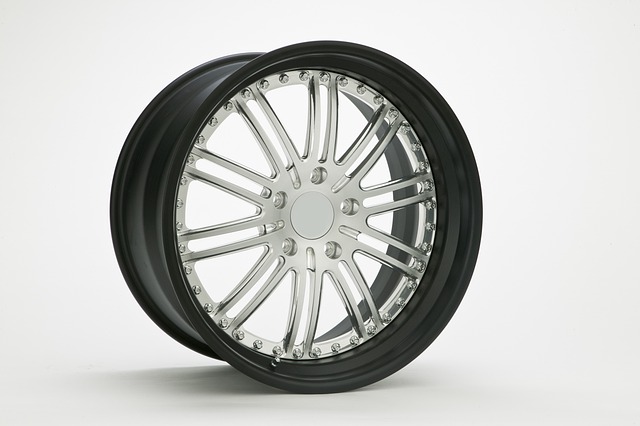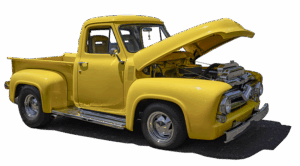Register Car in CA: Step-by-Step Guide to DMV VIN Verification
Looking to register your car in California? This comprehensive guide walks you through every step, from understanding eligibility requirements to receiving your registration plate. We cover crucial as…….

Looking to register your car in California? This comprehensive guide walks you through every step, from understanding eligibility requirements to receiving your registration plate. We cover crucial aspects like gathering essential documents and performing a DMV vehicle identification number (DMV VIN) verification. By the end, you’ll be equipped with all the knowledge needed to streamline the process efficiently.
- Understand Eligibility Requirements for Registration
- Gather Necessary Documents for Car Registration
- Perform DMV Vehicle Identification Number (VIN) Verification
- Submit Application and Fees at a California DMV Office
- Receive Your Registration Plate and Documents
Understand Eligibility Requirements for Registration

Before you start the registration process, it’s crucial to understand if your vehicle meets California’s eligibility requirements. To register in California, your car must be legally imported and possess a valid Vehicle Identification Number (VIN). The Department of Motor Vehicles (DMV) will conduct a VIN verification as part of their inspection process, ensuring the vehicle’s history aligns with its components. This step is vital to prevent fraud and ensure road safety.
A unique VIN is your car’s fingerprint, making it possible for a mobile vin verifier or vin inspection service to access critical information about the vehicle’s origin, previous owners, and any reported accidents or defects. As such, having an accurate and up-to-date VIN is essential when registering your vehicle with the DMV.
Gather Necessary Documents for Car Registration

Before heading to the California Department of Motor Vehicles (DMV) to register your car, make sure you have all the required documents in order. The process typically involves a variety of paperwork, so it’s essential to be prepared. One crucial document is the Vehicle Identification Number (VIN) verification report, which can be obtained through a mobile vin inspection or by visiting a DMV office for a standard vin inspection. This report ensures that your vehicle matches the information on file and helps prevent fraud.
Additionally, you’ll need to present proof of insurance, a valid driver’s license, and the title (or registration) from the previous state if applicable. It’s also helpful to bring along any other documentation related to the purchase or ownership history of the vehicle. With these necessary documents in hand, you can streamline the car registration process at the DMV, making it faster and less stressful for everyone involved.
Perform DMV Vehicle Identification Number (VIN) Verification

After gathering all necessary documents, it’s crucial to perform a DMV Vehicle Identification Number (VIN) Verification. This step is essential for ensuring that your car’s details match those on record with the Department of Motor Vehicles (DMV). You can do this through a standard VIN inspection or consider opting for a convenient mobile vin verification service, which allows an inspector to visit you at your location for on-site verification.
During the process, the inspector will check the vehicle’s VIN against the information in their system. This includes matching the year, make, model, and other identifying factors. A successful vin inspection ensures that your car is legally registered and ready for California roads. If any discrepancies are found, they must be rectified before the registration can proceed.
Submit Application and Fees at a California DMV Office

To register your car in California, you’ll need to submit an application and fees at a California DMV Office. This process involves verifying the Vehicle Identification Number (VIN) to ensure the vehicle’s authenticity and history. A crucial step is to obtain a valid VIN inspection or verification from a designated provider, which can be done through a mobile vin inspection service for added convenience. Presenting this documentation along with your application will expedite the registration process.
Remember that the DMV offers various ways to submit your application, including online and by mail. However, for a more efficient experience, especially when dealing with complex cases or issues, visiting a DMV office directly can be beneficial. Ensure you have all necessary documents, including proof of ownership, insurance, and identification, to streamline the process during your visit.
Receive Your Registration Plate and Documents

After completing your car purchase, it’s time to receive your registration plate and essential documents. In California, this process typically involves a trip to the Department of Motor Vehicles (DMV). Once you’ve acquired your vehicle’s unique Identification Number (VIN), you can verify it with the DMV through their online or mobile vin verification services. This step ensures the vehicle’s history is clear and helps protect against potential fraud.
For convenience, many individuals opt for a mobile vin inspection or use a mobile vin verifier to complete this task remotely. These methods streamline the initial registration process by providing instant results and eliminating the need for an in-person visit. Ensure you have all necessary documentation ready, including proof of purchase and insurance, to facilitate a smooth registration experience.
Registering a car in California involves understanding eligibility requirements, gathering essential documents, and successfully completing the DMV VIN verification process. By ensuring your vehicle meets all criteria and providing accurate information, you’ll be well on your way to receiving your registration plate and official documents. Remember, proper registration is crucial for legal driving, so take this step-by-step guide to streamline the process and avoid any delays or complications.







